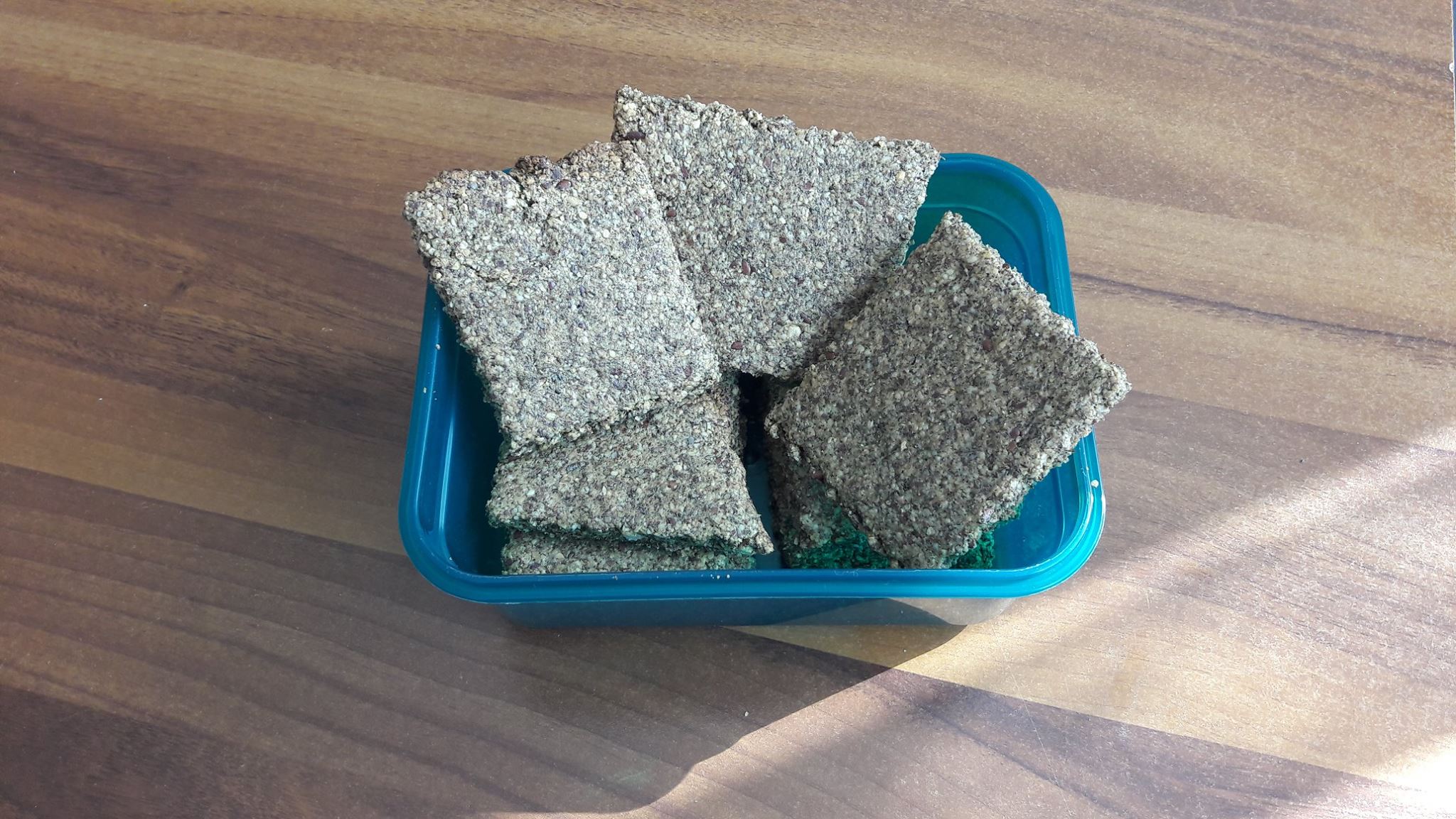As for the introduction, we won’t prolong it excessively. What about the taste? Well, tastes may vary, but I will say I was pleasantly surprised by how good it is, with of course, an emphasized health component. Moreover, 90% of the people to whom I gave a slice or two reacted positively, with some of them being genuinely delighted. The recipe is subject to change in terms of ‘use the seeds that you have and don’t sweat about it’.
Recipe:
- 150g sesame seeds;
- 100g flax seeds;
- 30g chia seeds;
- 30g sunflower seeds;
- Himalayan salt (1 teaspoon);
- Baking soda (1 teaspoon);
- Olive oil (2 tablespoons);
- Egg (1);
- Mineral water (1dl).
Notes:
- Regarding the seeds, we didn’t have pumpkin seeds, for example, but you can play around with anything that comes to mind, as long as they are still seeds and not grains. Also, you can order ready-made flours, so that’s an alternative if you don’t feel like grinding seeds, even though it’s a genuinely quick job;
- If you don’t have Himalayan salt, use regular salt;
- Baking soda instead of yeast, but also instead of baking powder, since the main ingredient there is cornstarch, which I discovered only yesterday;
- Instead of olive oil, I would suggest possibly coconut oil, which we will try next time although I’m a bit skeptical about that.
Preparation (very simple): If you’re working with seeds, grind them first into flour. After that, knead everything into a uniform mixture, then roll it out with a rolling pin on the foil on a work surface (we didn’t need any water for today’s quantity). Preheat the oven to 150 degrees Celsius. Transfer the dough from the foil to the baking tray or parchment paper. Before baking, cut the dough to get squares (who cares if they are even). Bake for about twenty minutes, with a slight check after fifteen. Remove from the oven and let it cool a bit before finally slicing the whole bread up. And that’s basically all there is to it.
From today’s mixture, we got about fifteen slices, some smaller, some larger (as in the picture), and I figure that will last me for three days. Of course, if you’re making this bread for the whole family who enjoys experimenting like you, increase the ingredient ratio. This quantity is sufficient for me for the mentioned three days and I mostly use it when I don’t have a prominent carbohydrate with the main meal, like scrambled eggs with tuna and spinach today (4-5 slices per day). Also, unlike regular bread, not to mention white bread, you won’t notice significant differences in shape, appearance, and taste during these few days it lasts.
I sincerely hope some of you will dare to follow this recipe and experience for yourselves all the positive aspects of a bread prepared this way, whether in regards to its taste or the already mentioned health aspect. All seeds are a rich source of fiber, protein, healthy fats, vitamins, and minerals, without any gluten, if you have to be careful about it. So, bon appetit, and I’m looking forward to the first comments, impressions, and ideas.
Original release date: March 30, 2019






